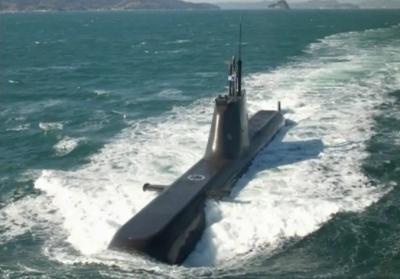
Washington: The United States has formally endorsed South Korea’s plan to build nuclear-powered submarines and has expressed support for Seoul’s push to gain uranium enrichment and spent nuclear fuel reprocessing capabilities, according to a newly released joint fact sheet.
The White House published the document summarizing the outcomes of two recent summits between South Korean President Lee Jae Myung and US President Donald Trump — one held at the White House in August and another in Gyeongju last month ahead of the APEC summit.
This fact sheet, the first major bilateral document released since President Lee took office in June, outlines new agreements on trade, defense, and nuclear cooperation. It includes Seoul’s commitment to invest US$350 billion in the US, in exchange for Washington reducing “reciprocal” tariffs on Korean goods from 25% to 15%, Yonhap reported.
“Consistent with the bilateral 123 agreement and US legal requirements, the United States supports the process that will lead to the Republic of Korea’s civil uranium enrichment and spent fuel reprocessing for peaceful uses,” the document states. It also confirms that the US has approved South Korea’s plan to build nuclear-powered attack submarines.
The existing 123 agreement prohibits South Korea from enriching uranium or reprocessing spent fuel, restricting nuclear activities strictly to peaceful energy use. South Korea has long sought revisions to secure rights to enrichment and recycling, citing energy security and growing nuclear waste concerns.
The new US support marks a major shift and paves the way for Seoul’s long-standing ambition to acquire four or more 5,000-tonne, conventionally armed nuclear-powered submarines by the mid-2030s, aimed at countering North Korea’s expanding military threats.
The endorsement comes as the Trump administration emphasizes the need for Indo-Pacific allies to strengthen their capabilities amid rising tensions with China.
The US reaffirmed its “enduring” commitment to defend South Korea through the continued presence of US Forces Korea (USFK) but did not commit to maintaining the current troop level of 28,500 amid speculation of possible force adjustments.
Both leaders also reaffirmed the US pledge to provide extended deterrence, including nuclear capabilities, and agreed to deepen cooperation through the Nuclear Consultative Group (NCG), which has not met since Trump took office.
The fact sheet outlines significant shifts in trade terms:
The US will reduce tariffs on automobiles, auto parts, timber, and wood products to 15%.
For pharmaceuticals, tariffs on Korean products will not exceed 15%.
Korea will receive semiconductor tariff terms “no less favourable” than those offered in any future US chip agreements of equal or greater trade volume.
South Korea also committed to:
$150 billion investment in US shipbuilding.
An additional $200 billion in strategic investments under a forthcoming MoU.
Annual dollar outflows will be capped at $20 billion to address Seoul’s currency concerns.
The document confirms:
Seoul will raise its defense spending to 3.5% of GDP as soon as possible.
South Korea will spend $25 billion on US military equipment by 2030.
Seoul will provide $33 billion in support for USFK.
Both sides remain committed to the transition of wartime operational control (OPCON) to South Korea by 2030, before President Lee’s term ends.
South Korea handed wartime command authority to the US during the Korean War; full wartime OPCON has yet to return despite peacetime control being restored in 1994.
The fact sheet reinforces a 2006 understanding on US “strategic flexibility,” affirming that:
The US may seek to use USFK forces for broader regional security missions, including China-related contingencies.
South Korea reiterates its position that it will not participate in regional conflicts against the will of its people.
The two countries agreed to work together to reduce non-tariff trade barriers, including:
A new “US Desk” for American horticultural products.
Guaranteed market access for US meats and cheeses using certain labels.
Faster approval processes for US agricultural biotechnology products.
Clearing the backlog of US export applications.
Ensuring that US digital service companies face no discrimination under Korean regulations, including network usage fees and online platform rules.
With inputs from IANS